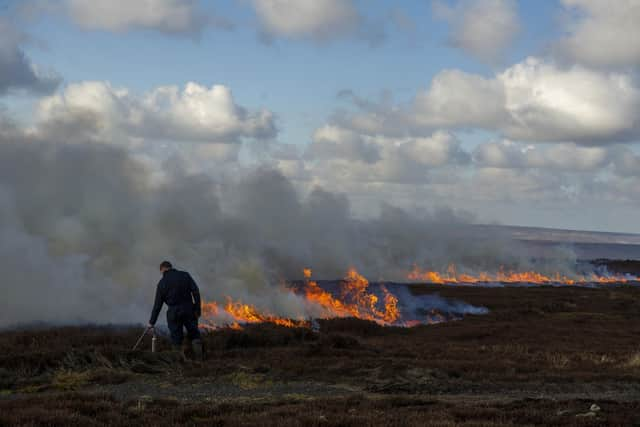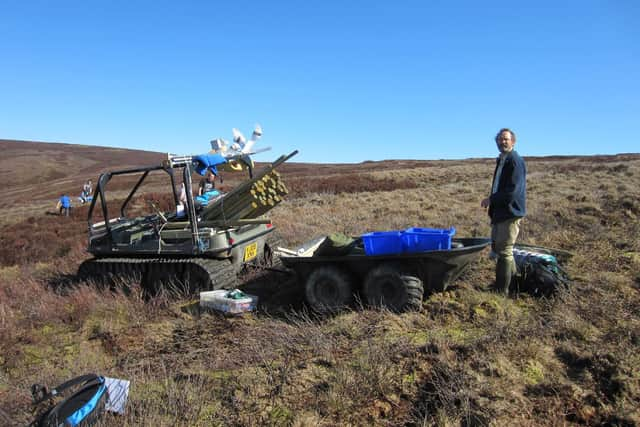"No One Size Fits All" - first moorland study of its kind reaches ten year half way point
In 2012, Natural England and Defra commissioned the study because there were knowledge gaps and lack of evidence around the pros and cons of the different moorland management approaches and the lasting effects.
Researchers at the University of York have been comparing the impacts of different management options on key aspects for mitigating climate change, increasing water storage and quality, as well as supporting biodiversity.
Advertisement
Hide AdAdvertisement
Hide AdReporting at the 10-year mark, they found that heather burning, mowing or leaving it unmanaged should all be available tools that upland land managers can use, with the method being determined by the condition of that particular piece of land and particular aspects - there was no ‘one size fits all’ approach.


Associate Professor Andreas Heinemeyer, from the Stockholm Environment Institute at the University of York, who led the work said the issue of moorland management, and burning in particular can be an emotive subject.
He told Country Post: "There are very few studies and that has not changed over the last 11 years. Most studies have been short term, or single sites, with no studies to compare different options.
"Our study proposed to do three sites to fill the knowledge gaps over a complete management scheme which no study has done.”
Advertisement
Hide AdAdvertisement
Hide Ad“Some aspects have really surprised me, but most seem to confirm what has been hypothesised previously but we never had the data.”


Healthy peatland gathers and stores atmospheric carbon, as well as retains water, providing much of our drinking water and reducing the risks of flooding in certain areas, and provides a home for many different species, including birds, butterflies, and bees.
Heathers growing on peat soil can quickly become dominant and out-of-control if the vegetation is not managed, but methods of management have been an area of debate for many years - some land-owners preferring to use fire as a method to maintain healthy growth, others using mowing, and some prefer the land left unmanaged.
Prof Heinemeyer added: “Prescribed burning can be more carbon beneficial than cutting but after five years we saw the worst option was burning but after ten years it completely turned around.
Advertisement
Hide AdAdvertisement
Hide Ad"Ultimately what this means is that there is no one management system that all landowners should use, but we now know that there is a choice and evidence to support those choices, which has been lacking previously.
The study also looked at the increasing threat of wildfire in the UK and its consideration on management techniques. Although there are some initial benefits to allowing heathers to grow unmanaged, it dries out the peat and comes with the very real risk of them catching fire due to the warmer and drier summers. These unpredicted and therefore unmanaged wildfire events can result in threats to wildlife and huge carbon losses when the fire burns into the peat.
The next stage of the study will focus on the long-term trajectory of vegetation as it recovers from burning and mown management, allow vegetation to reach maturity and follow its effects on carbon uptake, record long-term variability in methane emissions over a full management cycle, complete the different management across all the heather-dominated areas within the paired catchments and compare long-term development of ecological functions (water tables, carbon balance and biodiversity) under unmanaged heather against managed areas.
